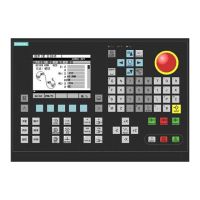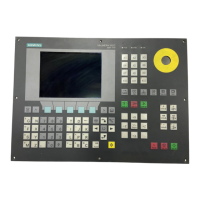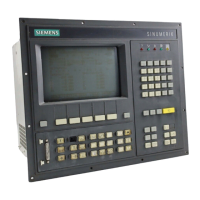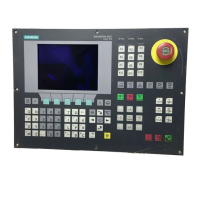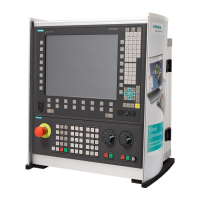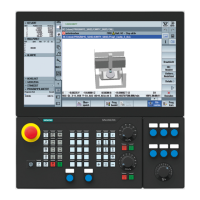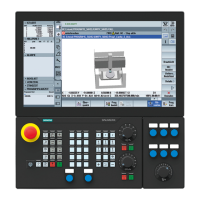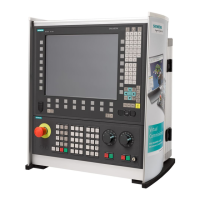W1: Tool offset
18.8 Incrementally programmed compensation values
Basic Functions
1540 Function Manual, 09/2011, 6FC5397-0BP40-2BA0
Figure 18-48 Definition of the position for absolute programming of a motion in tool direction
The reference to this auxiliary plane serves only to calculate the end position. Active frames are not affected by
this internal calculation.
Instead of MOVT= ... it is also possible to write MOVT=IC( ...) if it is to be plainly visible that MOVT is to
function incrementally. There is no functional difference between the two forms.
Supplementary conditions
The following supplementary conditions apply to programming with MOVT:
• It is independent of the existence of a toolholder with orientation capability. The direction of the motion is
dependent on the active plane. It runs in the direction of the vertical axes, i.e., with G17 in Z direction, with
G18 in Y direction and with G19 in X direction. This applies both where no toolholder with orientation capability
is active and for the case of a toolholder with orientation capability without rotary tool or with a rotary tool in its
basic setting.
• MOVT acts similarly for active orientation transformation (345axis transformation).
• If in a block with MOVT the tool orientation is changed simultaneously (e.g., active 5axis transformation by
means of simultaneous interpolation of the rotary axes), the orientation at the start of the block is decisive for
the direction of movement of MOVT. The path of the tool tip (TCP - Tool Center Point) is not affected by the
change in orientation.
• Linear or spline interpolation (G0, G1, ASPLINE, BSPLINE, CSPLINE) must be active. Otherwise, an alarm is
produced. If a spline interpolation is active, the resultant path is generally not a straight line, since the end
point determined by MOVT is treated as if it had been programmed explicitly with X, Y, Z.
• A block with MOVT must not contain any programming of geometry axes (alarm 14157).
7RRO
$X[LOLDU\SODQH
0297 $&
;
=
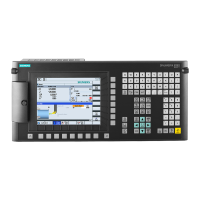
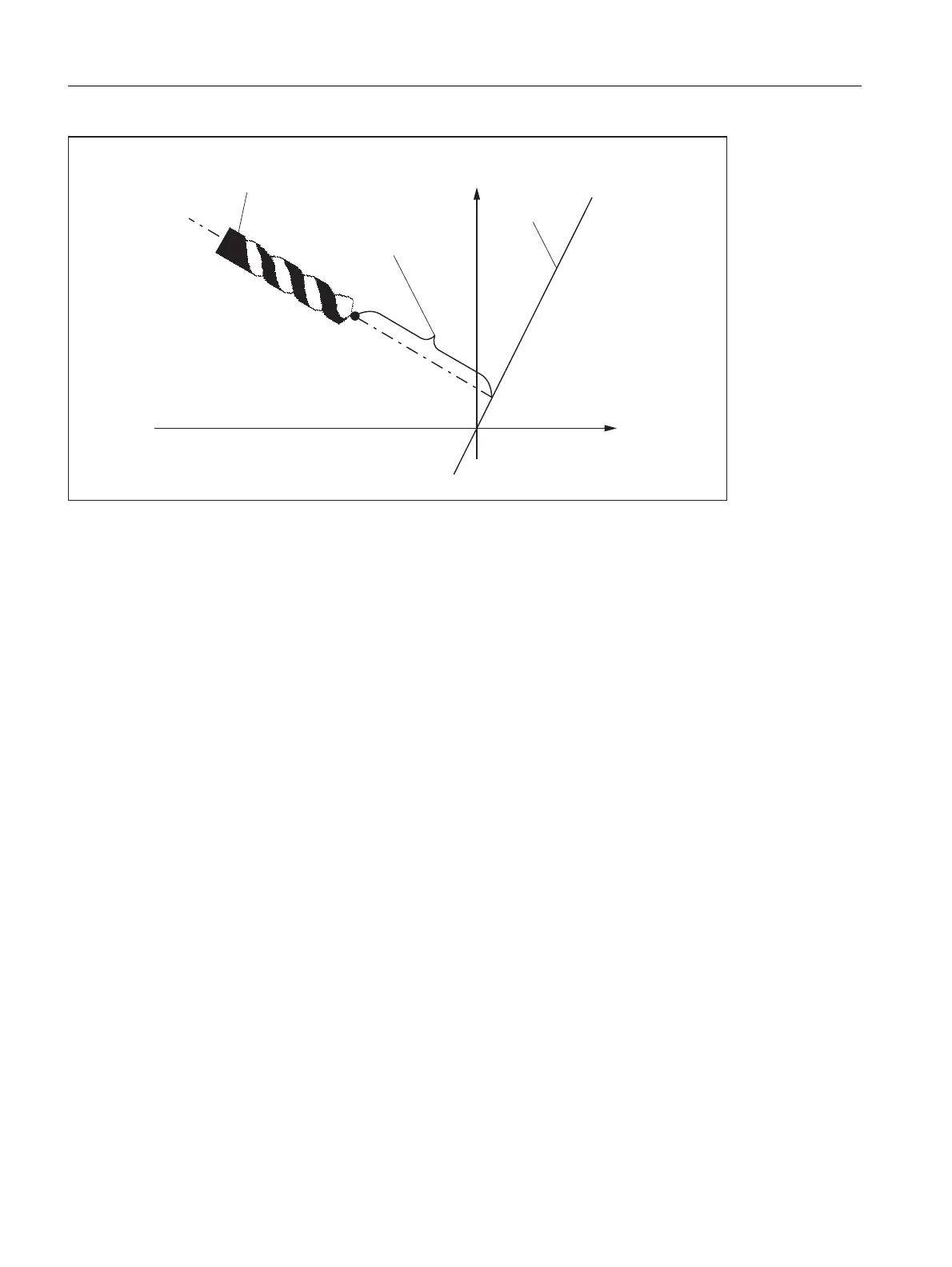